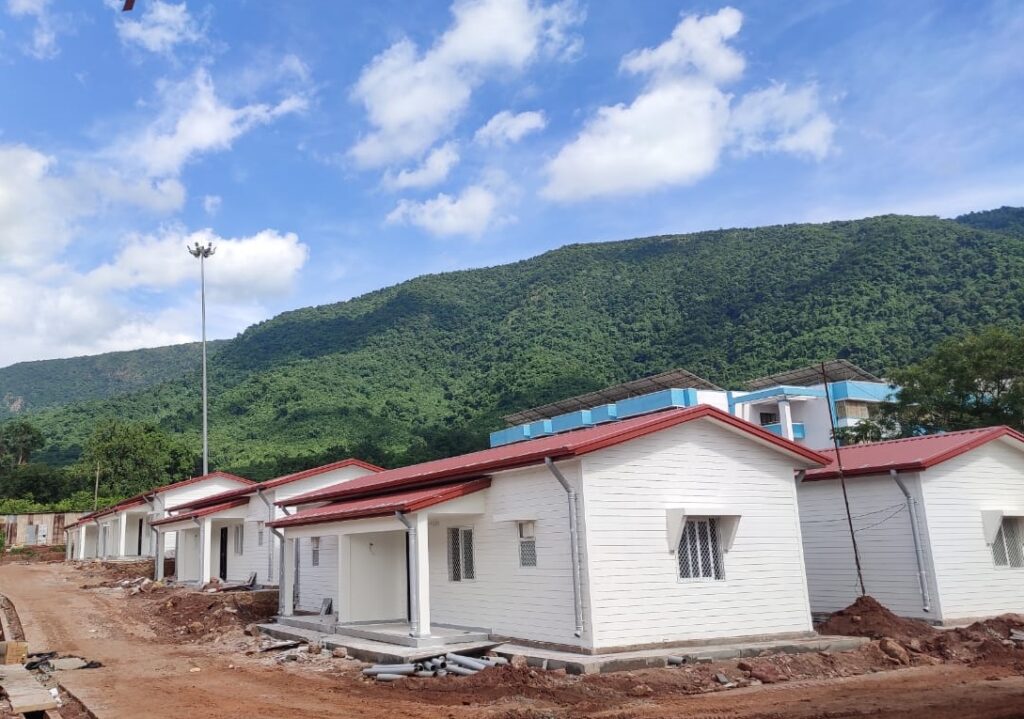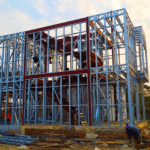Why Prefab Construction is the Future of Sustainable Building
The construction industry is undergoing a revolution, driven by the need for sustainability, efficiency, and innovation. Prefabricated (prefab) construction has emerged as a leading solution in this transformation, offering advantages that align with the future of sustainable building. But why exactly is prefab construction poised to shape the future of eco-friendly construction? Let’s delve into the key reasons.

Minimized Waste and Resource Efficiency
Traditional construction processes often generate significant waste, with surplus materials, off-cuts, and inefficient resource use contributing to environmental strain. Prefab construction, on the other hand, utilizes materials more efficiently. Components are manufactured in controlled environments, allowing for precise material measurement and usage, which dramatically reduces the amount of waste produced. Excess materials from one project can often be reused for another, supporting a circular economy.
Energy Efficiency and Reduced Carbon Footprint
Manufacturing building components in a factory setting allows for optimized energy use, reducing the overall carbon footprint of construction. The off-site production process also means fewer deliveries and reduced transportation emissions, compared to the numerous trips required to transport materials for traditional on-site building.
Additionally, prefab construction often integrates energy-efficient design practices. Pre-insulated wall panels, for instance, can greatly reduce the energy required for heating and cooling the building once it’s erected. With sustainability becoming a primary focus in construction, this energy-conscious approach is critical.
Speed of Construction and Less Site Disruption
In prefab construction, various components are built simultaneously in a factory while site preparations happen in parallel, significantly reducing overall project timelines. This speed is not only cost-effective but also minimizes the duration of environmental disruption. Shorter on-site construction periods reduce air and noise pollution and help mitigate the impact on local ecosystems.
For example, in urban areas, where construction activities can lead to noise pollution and traffic disruption, prefab methods provide a quieter, faster alternative.
Lower Energy Consumption During the Building’s Lifecycle
Prefab buildings are often designed with energy efficiency in mind. Incorporating elements such as high-quality insulation, energy-efficient windows, and modern HVAC systems, these structures require less energy to maintain comfortable indoor environments. As governments and developers focus on green building standards, such as LEED (Leadership in Energy and Environmental Design) and passive house certification, prefab construction provides an excellent foundation for achieving these goals.
Adaptability and Flexibility in Design
Prefab construction offers flexibility in both design and material choices, allowing architects and builders to create structures that are aesthetically pleasing and functionally sustainable. Whether it’s integrating renewable energy sources like solar panels or choosing recycled and environmentally-friendly materials, prefab construction opens the door to customizable, sustainable solutions.
Additionally, the modular nature of prefab buildings means they can be easily expanded, reconfigured, or relocated, reducing the need for new materials and the environmental toll of demolition and rebuilding.
Enhanced Worker Safety and Labor Efficiency
On-site construction is often riddled with safety hazards and challenges. Prefab construction takes place in a controlled environment where worker safety is more manageable, resulting in fewer accidents and higher productivity. Factories producing prefab components also provide more predictable working conditions, improving labor efficiency and ensuring high-quality output.
Supporting the Growing Trend of Urbanization
As the global population grows, particularly in urban areas, the demand for quick, sustainable, and scalable building solutions becomes increasingly important. Prefabrication enables the construction of multi-story buildings, apartments, and offices in a fraction of the time compared to traditional methods, while also aligning with sustainable urban planning principles. This makes prefab construction an ideal solution to meet the rising demand for eco-friendly urban infrastructure.
The Rise of Smart and Sustainable Materials
Another factor driving the future of prefab construction is the increasing availability of smart and sustainable building materials. From recycled steel and wood to environmentally-friendly concrete alternatives, these materials are being integrated into prefab construction processes to further boost sustainability. Light Gauge Steel Framing (LGSF), for instance, is an example of a highly efficient material often used in prefab buildings due to its recyclability, durability, and low environmental impact.
Conclusion
The prefab construction industry is a game-changer for sustainable building. By reducing waste, lowering carbon emissions, accelerating construction timelines, and offering innovative design flexibility, prefab construction aligns perfectly with the global shift towards environmentally-conscious development. As new technologies, materials, and methods emerge, prefab construction will continue to lead the charge in shaping the future of green building and helping societies worldwide meet their sustainability goals.
By embracing prefab construction today, we’re building not only for the present but for a sustainable future.






















